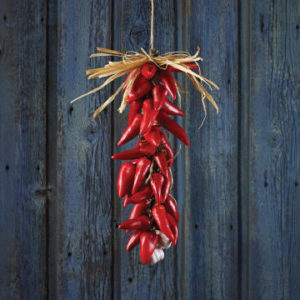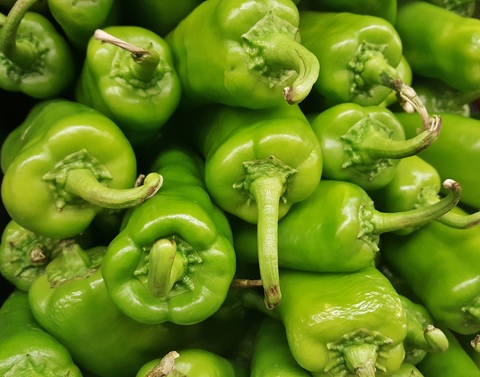Taken from https://bonnieplants.com/
Planting: Space 12 to 48 inches apart, depending on type.
Soil requirements: Peppers need well-drained, nutrient-rich soil. Amend soil with 3 to 5 inches of compost or other organic matter prior to planting. Soil pH should be 6.2 to 7.0.
Water requirements: Keep soil consistently moist throughout the growing season. Mulch soil to reduce water evaporation.
Frost-fighting plan: Pepper is a hot-weather crop. A light frost will damage plants (28º F to 32º F), and temps below 55º F slow growth and cause leaves to look yellowish. If a surprise late spring frost is in the forecast, protect newly planted seedlings with a frost blanket.
Common issues: Plants drop flowers when daytime temps soar above 90º F. Few pests bother peppers, but keep an eye out for aphids, slugs, pill bugs, and leafminers. Humid weather (especially in gardens with heavy soil that doesn’t drain well) can invite fungal diseases like leafspot.
Harvesting: Check image on plant tag (or at the top of this page) to learn what your pepper looks like when mature. Some peppers turn red, yellow, or other colors at maturity. Others are ready in the green stage, but will turn red if left on plants. Use pruning shears or a sharp knife to cut peppers with a short stub of stem attached. Pulling peppers by hand can cause entire branches to break off. Fruits store longer for fresh use if you don’t remove the stem, which can create an open wound that’s ripe for spoiling.
Storage: Store unwashed (or washed and dried) peppers in the refrigerator in a loosely closed plastic bag. Moisture is a pepper’s enemy and hastens spoiling. For peak flavor and nutrition, use within a week.
Spacing: Space the plants two to three feet apart and insert some type of support as pepper plants can be prone to branch breakage, especially when the branches are heavy with fruits. I insert a tomato cage or a stake to provide support to the plant. If you live in a short season region, a sheet of plastic mulch can also be placed on the soil to trap heat, reduce competition from weeds, encourage quick growth, and a heavy yield. Even if you choose not to use a plastic mulch, you can pre-heat your garden soil in late spring by placing a plastic mulch on top of the soil for 10-14 days before planting.
For more information, visit the Peppers page in our How to Grow section.
Full Sun
Common pests of hot peppers include aphids, flea beetles, slugs, and cutworms. I find cutworms and slugs are a problem in late spring when the plants are still young and very susceptible to damage. As they grow, aphids and flea beetles can be more of an issue. I handpick slugs, use collars to deter cutworms, and hose off aphids and flea beetles when spotted.
Peppers can be prone to diseases like Botrytis, bacterial leaf spot, Fusarium, and Anthracnose. Proper spacing and watering are important steps to reducing hot pepper diseases. Water the soil, not the foliage. If you’ve had issues in the past, it’s also a good idea to grow disease-resistant varieties and practice good crop rotation.

The branches of hot peppers, especially in late summer when they are heavy with fruits, are prone to breaking. Use cages or stakes to support the plants.
Also called a New Mexico or California chile, this is a green, chile-type, mildly hot pepper that ripens to a pretty deep red. The thick-walled fruit is the classic pepper used for chiles rellenos, soups, and stews. Rich, mellow flavor. Plants are disease resistant. Plants bear continuously through summer where nighttime temperatures aren’t higher than 90 degrees. This is also the variety that has been most widely grown and dried to make ristras, or string of dried Chile peppers, that are a New Mexico tradition. Originating as a practical way for farmers to cure peppers to keep a long time, the pretty strings of dozens of dried red peppers have taken on ornamental value as well.

